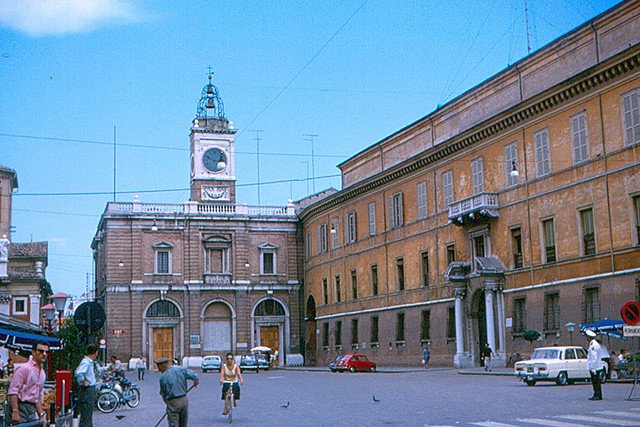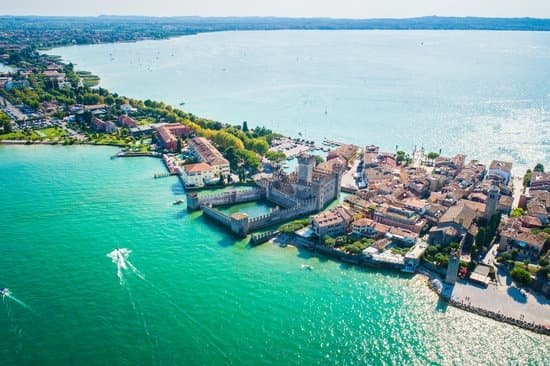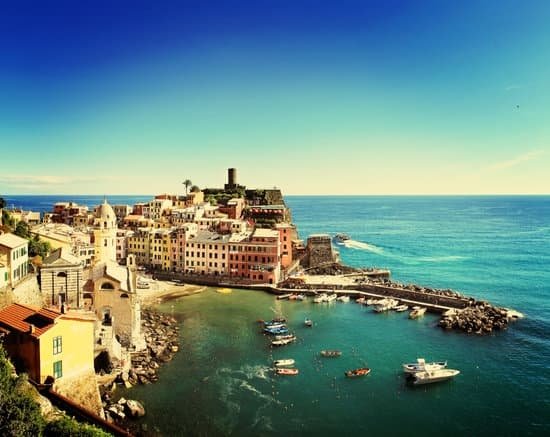
Every year in Italy, by 25 years, “Il Sole 24 Ore” publishes a ranking of Italian provinces: best places to live in Italy, according to the quality of life, taking into account several parameters: services, environment, health, child care, business and labour, population. In the edition of 2014 in the first place there is Ravenna; in 2013 had won Trento that this year is second.
In general, we can say that in Italy there is a strong territorial divide: “it is still a clear division between North that despite the long crisis in any way surives, and the South, in emergency on the front lines of work, infrastructure and the environment. This year bringing up the rear is a province of southern Italy, Agrigento». In the first 10 places there are medium or small cities (except Milan, 8), from Northeast or mountainous: «Good results of the Centre, particularly the provinces of Tuscany. The Noon manages to go in the first part of the ranking only with Sardinian provinces (Olbia-Tempio, Sassari and Nuoro). For the rest of Italy this time must resign themselves to the lower, dominated by Sicilian provinces, Calabria and Puglia».
The ranking below: here the detail of scores.
1. Ravenna
2. Trento
3. Modena
4. Belluno
5. Reggio Emilia
6. Aosta
7. Bologna
8. Milano
9. Siena
10. Bolzano
11. Livorno
12. Roma
13. Macerata
14. Sondrio
15. Grosseto
16. Florence
17. Cuneo
18. Forlì-Cesena
19. Parma
20. Olbia-Tempio
21. Udine
22. Piacenza
23. Treviso
24. Genoa
25. Massa Carrara
26. Brescia
27. Perugia
28. Trieste
29. Pisa
30. Vicenza
31. Pordenone
32. Rimini
33. Verona
34. Mantova
35. Prato
36. Pesaro e Urbino
37. Arezzo
38. Savona
39. Verbano-Cusio-Ossola
40. Ancona
41. Bergamo
42. Gorizia
43. Ferrara
44. Sassari
45. Padova
46. Ascoli-Piceno
47. Lucca
48. Como
49. Rovigo
50. Nuoro
51. La Spezia
52. Pistoia
53. Asti
54. Torino
55. Lecco
56. Varese
57. Cremona
58. Ogliastra
59. Pavia
60. Vercelli
61. Imperia
62. Terni
63. Cagliari
64. Biella
65. Venezia
66. Novara
67. Alessandria
68. Oristano
69. Lodi
70. L’Aquila
71. Viterbo
72. Teramo
73. Latina
74. Chieti
75. Ragusa
76. Matera
77. Carbonia-Iglesias
78. Rieti
79. Potenza
80. Crotone
81. Medio Campidano
82. Campobasso
83. Siracusa
84. Benevento
85. Pescara
86. Brindisi
87. Avellino
88. Isernia
89. Frosinone
90. Catanzaro
91. Bari
92. Trapani
93. Salerno
94. Messina
95. Palermo
96. Napoli
97. Vibo Valentia
98. Cosenza
99. Catania
100. Lecce
101. Enna
102. Caltanissetta
103. Taranto
104. Caserta
105. Foggia
106. Reggio Calabria
107. Agrigento
“Il Sole 24 Ore” explains that in Italy Ravenna has arrived before mainly due to high votes obtained on “services, environment and health”, “the availability of childcare than the potential audience is twice the average, the rate of hospital emigration does not reach the 3% (average 9%), the disposal of civil cases is equal to 52 (average 38). Asset is also under the heading ‘ business and labor “(excellent ratio between loans and deposits and high occupancy rate, 67%) and in the” population “where stands for the best balance between under 15 and over 64 (121 against 87). Rejection, however, under ‘ public policy ‘: high incidences of complaints of thefts, robberies, muggings and pickpocketing in the House the relegate to 103. However, this security situation, which unites many northern provinces and major metropolitan areas. ”
With the population strength of 2.7 million, Rome has mild to rainy climate in winter while in the summer it is hot and dry. To understand the city’s artistic richness it would be wise to move on foot since you can play it by ear while you can take quick side trips at the inspiration of the poetic spirit in you. However to move around conveniently you can depend on private guided tours for which you can easily contact your hotel management. Tram-Bus system is another reasonably priced option that will take you around the city and Rome’s neighborhoods as well to enjoy a charming tour.
Whatever may be your special preferences as a tourist, in Italy there are some places you cannot miss when you are visiting Rome with the sole purpose of sightseeing. In the popularity scale possibly the Coliseum would come next to the Vatican to say the least. Moreover it is the most recognizable structure of Rome. Since operating hours vary all along the year it would be advisable that for admission details you call beforehand.
Once you finish the gravity-filled visit of The Coliseum, stroll along the lane to Foro Romano, also known as Roman Forum, which was Ancient Rome’s community center. Economic, political and religious activities took place at that very site. In the midst of the ruins a number of its columns still stand high even after 2000 years, vouching for the great qualities of Roman architecture valued even today. From 9 am to an hour before sunset it remains open for visitors while free admission it offers.
The Pantheon stands today without hardly any changes and that makes it difficult to believe that it is 1,800 years old really. Around 125 AD, Emperor Hadrian built The Pantheon or “temple to all gods”. The 9-meter opening of its concrete dome is the only source of illumination inside. Here remain buried two kings of Italy and many other prominent individuals of Europe. Every day in week including holidays except Christmas it remains open. No admission fee is charged.
Three hours you can spend easily for visiting The Vatican and the collection there, of paintings, sculptures, books and a number of artifacts that record the Catholic Church’s history in chronological order. Also relish in St. Peter’s Basilica, the wonder of Michelangelo’s Pieta, note its detailed masonry, and the papal catacombs as well. Proceed next to the Vatican Museum that houses some more thrilling antiquities of which no less important are Egyptian mummies dating back to the BC period. In case there is time constraint move to the Sistine Chapel skipping all other attractions. It is stated that when Pope Julius II invited Michelangelo, a rare sculptor basically, to paint the Bible on the ceiling of the Sistine Chapel, he guessed it could be a ploy of his rivals who might have thought that since Michelangelo was not known for his skill as a painter he would create something very ordinary and thus would land in an embarrassing situation. However events did not follow exactly that track as we learn from the history. Truly speaking, the Sistine Chapel is considered perhaps as the Renaissance period’s most valued gift.
Since you will get many restaurants and cafes in near vicinity of main tourist attractions and that makes it easy to take care whenever you are hungry. For specials and tourist information the hotel concierge is generally the best source and that is the case here too.
Sites To See In Italy
With the advent of the World Wide Web, it’s easier than ever to do research into those vacation spots that you’ve longed to visit. With the cost of travel these days, it’s important that you do as much research as possible so that you can pack as much into your vacation as possible.
However, even though you want to experience as much as possible on your vacation, one of the major mistakes that the vacationer makes is to try to do too much. You end up returning home needing a vacation from your vacation!
The best thing to do is make plans to visit one or at most two tourists spots each day. Have a backup site you’d like to visit in case something happens to one of your first two choices.
Well, what’s to see in Italy?
That all depends on your interests. There is indeed something for everyone.
All roads lead to Rome, as the saying goes, so let your feet take you in that direction. There are so many museums, churches, art galleries, and other places of interest there that you could spend your entire vacation in the capital city of Italy quite easily.
The Colosseum, located in the center of Rome, is over 2000 years old. Pictures in books do not do this ruined edifice justice, it must be seen to be believed. During its heyday it could seat 50,000 people, gathered together to watch the famous ‘circuses’ of gladiatorial combat. Nearby is the Forum, where Julius Caesar was killed by his Senators on the Ides of March.
After Rome its on to Naples. Well, Naples is just the starting point to get to Pompeii, and nearby Herculaneum. These are the cities buried under the ash of the eruption of Mount Vesuvius in the 1st century AD, and forgotten about for 1600 years. Excavations began in the 1700s and are still going on today. You’ll travel first to Naples, and from there go on to these famous cities frozen in time.
It’s possible to make a daytrip from Rome to Pompeii, so don’t miss out.
All Roads Lead To Rome, And Away From Rome
Where to go from Rome? Well, you could go north east, up to Venice. Venice, the city of canals. Indeed, Venice is surrounded by water – the best way to get there is by boat or train. This unique city is located on the southern coast of Italy, with far above it the country of Austria and to the west, Slovakia. Known as the city of canals, it’s also the city of bridges. Venice actually covers 117 small islands, with 409 bridges traversing 150 canals. You have never seen any city like it.
If you don’t want to go north you can go south, to Tuscany.
Are you a wine enthusiast? Or an oenologist, to put it technically. (That’s pronounced een-ol-o-gist, by the way.) If you are, you’ll want to visit the region of Tuscany, famous for its winemaking. There are fourteen “wine roads” throughout the region. Each road identifies the type of grape grown in that area, and has signs pointing to the various vineyards and other businesses open to the touring public. You might want to start your tour in the city of Florence, as you’ll be able to get in a little culture as well, by visiting the famous Uffizi Gallery.
The island of Elba, famous for its wine, is also a renowned tourist resort. And it’s the place where Napolean Bonaparte was first imprisoned (before escaping, regathering his army, losing at Waterloo, and ending up at St. Helena.) You can visit the two villas that Napolean occupied there.
About the country
Italy, the birthplace of pasta and pizza provides a wide range of choices for artwork lovers to experience. A temperate climate exists here with very hot summers and not so cold winters. The weather is the best in spring and autumn with pleasant temperatures and scenic views. At that time of the year, the place isn’t crowded much and things can be enjoyed in leisure. Incase of emergency call 112. For fire call 115 and for ambulance call 118.
Culture
Italian is widely spoken and is the official language. English isn’t very familiar to the locals. Family ties are of utmost importance here and hence social courtesies mean a lot to the locals. There is a great impact of the Roman Catholic Church on the culture here. There is a high content of chlorine in tap waters, so bottled water is recommended for staying fit during the trip. Since Italian is spoken on a wide scale, it is highly recommended to learn few common Italian phrases which can be of great use. Social gatherings call for formal wear, but one can dress in casuals otherwise. At some religious places, sleeveless shirt and shorts are frowned upon. So they are better avoided. Purses and wallets should be well guarded and in case of any theft, police should be informed about the incident.
Site Seeing
The first thing to check out is the leaning tower of Pisa, where Olympics originated. At places like museums and art galleries, photography, especially flash photography is restricted. Check out the ticket counter for more information. Italy should be majorly discovered on foot for a thorough viewing of all the beautiful buildings and monuments. Coaches and trains are a good option to get to a tourist spot.
Shopping
Shops here are open from 9am to 8pm, closed for lunch. Quality of goods is great although the prices are very less. Items like crystals, lacework, leather good, and jewelry can be bought at the stores. Remember to hold on to the receipt. Tipping of 10% is customary along with the service tax levied on the bill. Italy is famous for top designers of the world, so do buy clothes and accessories to update your wardrobe. Cruises have formal gatherings in the evening, so ensure to buy a cocktail dress or some formal wear, though casuals can be worn at other times.
Electricity
The voltage used is 220 volts and 50 Hz frequency.
Getting there
Alitalia is the national airline of Italy. Many other flights connect to Italy from USA, Canada and Australia and there is big competition to attract passengers giving a wide range of offers to travelers. Rome airport is located 26 km away from the city and it takes 45 minutes to get there from the airport. Trains connect directly to Termini Station from where one can take taxi to get to their destination. Duty free shops, bank, car hire and restaurants are the other services provided at this airport. Milan has another famous airport here, which is at a distance of 45km away from the city.
Brindisi, Ancona, Naples and Venice are the major seaports of Italy. Italian State Railways connects many European cities. But, Eurostar provides the fastest train service.
If choosing to drive, don’t forget to carry international driving license and international insurance certificate. Roads connect Italy to France, Austria and Switzerland. Many coach services are provided from the neighboring countries.
Duty Free Items
1. 200 cigarettes or 50 cigars or 100 cigarillos or 250g of tobacco
2. 2liter of wine and 1liter of spirits (over 22 per cent) or 2liter of fortified or sparkling wine
3. 50g of perfume and 250ml of eau de toilette; 500g of coffee or 200g of coffee extract (if over 15 years of age)
4. 100g of tea or 40g of tea extract
5. Gifts not exceeding €89.96 (if entering from an EU country), €175 (if entering from a non-EU country).
You may also be interested in:

I’m a passionate traveler, writer, and Italophile. My fascination with Italy’s history, art, and culture has led me on countless adventures across the Italian landscape. Through “I Live Italy,” I share my love for this extraordinary country and aims to inspire others to explore its boundless beauty.




